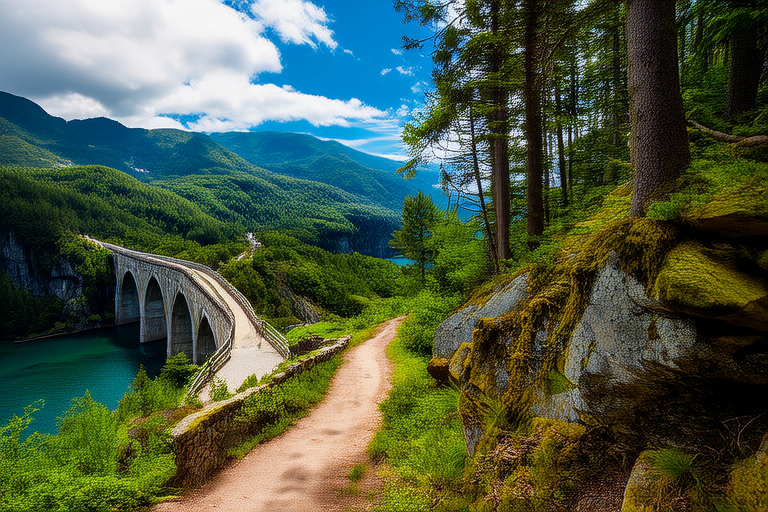Hidden Gems vs. Popular Destinations: A Scenic Spot Comparison Guide

Hidden Gems vs. Popular Destinations: A Scenic Spot Comparison Guide
Welcome to a comprehensive exploration of two contrasting types of travel destinations: hidden gems and popular destinations. Each has its own allure, offering distinct experiences that cater to different traveler preferences. This guide aims to help you decide between the lesser-known, off-the-beaten-path locations and the globally renowned tourist spots. By examining various factors such as accessibility, crowd levels, cultural experiences, natural beauty, and overall value, we will equip you with the knowledge to make an informed choice about your next adventure.
Introduction
The world is full of breathtaking landscapes and fascinating cultures, yet many travelers find themselves choosing between two extremes: the hidden gem and the popular destination. Hidden gems often offer a more intimate and authentic experience, while popular destinations provide the convenience of well-established tourism infrastructure and widespread recognition. This guide will delve into the nuances of both, helping you determine which option aligns best with your travel aspirations.
Accessibility
One of the first considerations when planning a trip is how easily accessible the destination is. Hidden gems can sometimes pose challenges due to limited transportation options and remote locations. For example, reaching some of the most stunning beaches in Papua New Guinea requires a series of flights and boat rides, making them less accessible than popular spots like Bali or Phuket. In contrast, popular destinations like Paris or New York City are well-connected by international flights and have robust public transportation systems.
Visa requirements also play a significant role in accessibility. Countries known for their hidden gems may have stricter entry policies, deterring potential visitors. On the other hand, popular destinations often have simplified visa processes to accommodate the influx of tourists. Local infrastructure, including accommodation availability and language support, further influences the ease of travel. While hidden gems might lack these conveniences, they often compensate with unparalleled tranquility and solitude.
Crowd Levels
The level of crowding at a destination greatly affects the travel experience. Popular destinations are, by definition, crowded, which can detract from the enjoyment of the scenery and cultural attractions. For instance, visiting the Eiffel Tower during peak season means enduring long lines and battling through throngs of people. In contrast, hidden gems like the Plitvice Lakes National Park in Croatia offer a serene environment where visitors can explore nature’s wonders without the hassle of large crowds.
While crowded areas may offer a more vibrant atmosphere and a chance to meet fellow travelers, hidden gems provide a sense of privacy and exclusivity. This can enhance the appreciation of natural beauty and historical landmarks, allowing for a more intimate connection with the surroundings. However, the lack of crowds in hidden gems can sometimes mean fewer facilities and services, so travelers must be prepared for a more rustic experience.
Cultural Experiences
Cultural richness is another critical factor in choosing a travel destination. Popular destinations often have well-preserved historical sites and cultural centers that cater to tourists. These places frequently host events and festivals celebrating local traditions, providing visitors with a taste of the culture. For example, the Rio Carnival in Brazil is a spectacle that draws millions of spectators each year.
Hidden gems, however, may offer more authentic and uncommercialized cultural experiences. Smaller towns and villages in countries like Bhutan or Myanmar retain traditional ways of life, offering travelers genuine interactions with locals. These interactions can lead to a deeper understanding of the culture and its heritage. Additionally, hidden gems often have unique festivals and rituals that are not as widely advertised, providing a more intimate glimpse into local customs.
Natural Beauty
Natural beauty is a significant draw for many travelers, and both hidden gems and popular destinations offer awe-inspiring landscapes. Popular spots like the Grand Canyon or the Swiss Alps are renowned for their dramatic vistas and geological formations. These destinations attract millions of visitors annually, ensuring that the natural beauty is well-maintained and accessible.
Hidden gems, on the other hand, often feature pristine environments untouched by mass tourism. Places like Sapa in Vietnam or the fjords of Norway offer breathtaking views and untouched wilderness. These areas provide a sense of discovery and wonder, as visitors explore landscapes that remain relatively unknown to the wider world. The flora and fauna found in hidden gems can also be more diverse and unique, offering a richer ecological experience.
Overall Value for Travelers
When considering the overall value of a destination, several factors come into play, including cost, accommodation, and available activities. Hidden gems tend to be more affordable, with lower prices for accommodations and meals. This can be especially appealing for budget-conscious travelers. However, the limited availability of amenities means that hidden gems may not always offer the same level of comfort as popular destinations.
Popular destinations, while more expensive, provide a wide range of activities and services. From luxury resorts to guided tours, these spots cater to various interests and budgets. The convenience of having everything at your fingertips can make popular destinations a more attractive option for those seeking a hassle-free vacation. Ultimately, the choice between hidden gems and popular destinations comes down to personal priorities and what you value most in a travel experience.
Conclusion
In conclusion, the decision between a hidden gem and a popular destination depends on individual preferences and travel goals. Hidden gems offer an authentic, intimate experience with fewer crowds and more unique cultural encounters. They provide a sense of discovery and allow travelers to immerse themselves in the local environment. Popular destinations, on the other hand, guarantee convenience, well-established infrastructure, and a wealth of activities and services.
Ultimately, the best choice is the one that aligns with your travel aspirations. Whether you’re seeking solitude and authenticity or excitement and ease, this guide has provided insights to help you make an informed decision. Remember to consider your personal preferences and travel goals when planning your next adventure. Happy travels!